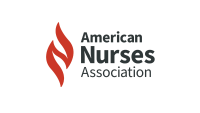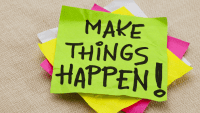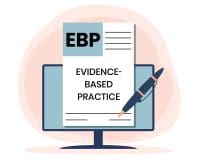A step-by-step guide for nurses
- Disseminating information from podium and poster presentations as well as article publications to a wider audience can present challenges.
- Podcasts offer an opportunity to make accessing this content easy and convenient.
- Many resources exist to help you design, develop, and distribute podcast content.
Nursing podcasts provide nurses and nursing students with opportunities to learn about trends and issues in the profession, new research, innovation, and more. Many nurses also come to podcasts to listen to stories about other nurses and to find perspective. As part of the dissemination series, this article offers guidance on how to start a podcast as well as how to turn your oral presentation, publication, or poster topic into a podcast that reaches a broader audience and expands your content.
Why podcasting?
As a dissemination tool, podcasting has the advantage of audience convenience and accessibility. Nurses can listen at home or at work and while driving, exercising, or shopping. Nurses have reported finding podcast-style lectures helpful when they’re integrated into coursework, and research indicates that storytelling in healthcare aids in translating knowledge and initiating conversations. Some nursing classes use podcasts as part of the main coursework, whereas others use it as supplemental material.
The shift of information access to virtual platforms during the pandemic has continued. Podcasts offer benefits for professionals and students across generations who have multiple responsibilities, including child care, work, and self-care. In an age of digital transformation, podcasts serve as a win-win option for optimizing learning and information access.
How to get started
Whether you’re looking for a wider audience for your poster, publication, or podium material or to share your expertise, you have two podcast options: You’re invited to participate in a podcast by an existing platform or a professional organization. In that case, you’ll need only to focus on preparing your script and delivering it. If you’re starting your own podcast series, you’ll want to follow the steps outlined below. (See Transition to podcast.)


Transition to podcast
Consider the following steps for distributing your publication, poster presentation, or podium speech via a podcast.
From publication to podcast
- An article has headings and subheadings, which are a good starting point for outlining your podcast.
- Select the key points you’d like to cover.
- Develop your script using the article as a guide.
- Your publication might be in the form of a book, book chapter, or other printed media. All of these formats can be used to develop engaging podcast material.
From poster to podcast
- Similar to a journal article, the poster sections (background, methods, results, discussion, nursing implications, evaluation and future research) serve as a guide for developing your script.
- Posters typically are more concise than an article, book, or book chapter, so you may find it easier to develop a podcast script from this source material.
From podium to podcast
- Of the three, a podium presentation may be the easiest to develop since you already have presentation slides.
- You can record your podcast as if you’re doing your podium presentation.
- You still need to plan. What’s the length of your podcast? Who’s your target audience? How many episodes do you want to produce?
Define your niche and focus
Reflect on and articulate a clear and compelling vision, and stick to it. If you can do that, your listeners will come to you specifically for that topic. They have many listening options, so you want to make it clear what they’ll hear from you and how it will benefit them.
Start with a list of subjects that you know or love. For example, Nurse Danielle Maltby’s The WoMed podcast focuses on women in healthcare, including self-care, mental health, emerging healthcare trends, and education. Another popular nursing podcast, The Nurse Keith Show, covers topics on career development, interprofessional collaboration, and personal growth.
You also can define your podcast based on your strengths and expertise. The Society of Gastroenterology Nurses and Associates (SGNA) podcast Gut to the Chase covers a range of topics in gastroenterology nursing. SGNA is a professional organization, but an individual nurse also can develop a podcast focusing on a specific area of specialization or expertise. As you define your niche, reflect on what makes you different so that you’ll stand out from other podcasts on similar topics.
Identify your target audience
Are you addressing new-to-practice nurses? A specialized group? The general nursing population? Identifying your audience will help you customize your content and provide meaningful material. For example, if your subject is neurology, you can cover a range of clinical (updates in stroke care) and professional topics (tips for obtaining stroke specialty certification).
Choose your hosting style
You have several hosting style options. In an interview podcast, you invite a guest to be interviewed about the topic. Solo/monologue podcasts have no guests. You (the podcaster) review current events, offer advice, answer listener questions, share stories, analyze evidence, or present research. Conversational podcasts are similar to a radio talk show where hosts exchange views on a specific theme or topic. The podcast can open with one of the hosts providing an overview of the topic followed by discussion. Panel podcasts feature several guests talking about a topic based on prepared questions.
Design your branding
Branding allows you to create the audience’s perception of your podcast through the themes you feature and the emotions and reactions experienced by your audience. Successful podcasts have a clear mission and vision. The Nurse Keith Show mission statement, for example, includes “helping you create the most satisfying nursing career and life possible.”
Branding encompasses both a visual representation of your mission statement and the mission statement itself, which should be concise (about 10 words). Visualizing your theme includes the podcast cover art—a thumbnail photo that resides on the podcast platform. Some podcasters hire graphic designers using platforms like Fiverr (fiverr.com), which is relatively inexpensive. You provide the graphic designer with your vision, and the designer develops a few sketches to choose from.
Select your recording and editing software
To record a podcast, typically you need a USB or XLR microphone. A USB microphone plugs directly into your computer via a USB port. An XLR microphone plugs into a recording device, which uses either a memory card or cable to transfer recordings to your computer. However, since the pandemic, podcast recording software has become simpler—so much so that you can bypass an XLR mic/recording device and record directly from your computer. Some podcasters—including the Colin and Samir Show—dedicate their programming to helping content creators get started. You’ll also find a wealth of information on YouTube, where seasoned podcasters test out equipment and share tricks of the trade.
A range of podcast editing software programs and apps exist. Audacity is a free digital audio workstation (DAW) popular among beginners (audacityteam.org). You’ll also find other pro-level programs with more function and capabilities. If you’d prefer, you can tap into freelance experts and production companies to edit your podcast.
The amount of editing will depend on your preferences. Some podcasters edit the recording line by line, while others release their recordings raw. Documentary style podcasts, those that integrate sound and music, involve more intense editing.
Pick your podcast hosting service
Hosting your podcast on your website can pose bandwidth issues. Instead, use a podcast hosting platform that stores and delivers your audio and video files to your subscribers. Examples of media hosting companies that charge a fee include Libsyn (libsyn.com), Blubrry (blubrry.com), Podbean (podbean.com), Spreaker (spreaker.com), and Transistor (transistor.fm). Free media hosting services include anchor.fm and LaunchPadDM.
Prepare for episodes
The first step in preparing for podcast episodes is similar to preparing for a series of live oral presentations. After you decide on your target audience and area of focus, you can develop an outline of topics to cover in each episode. Develop key questions for each topic, and then research what questions your audiences will find interesting, which probably will include issues they’re experiencing. (See Build an outline.)
Build an outline
Preparing for a podcast requires episode outlines that address the questions you’ve identified that your audience would like answers to. For example, if you’re focusing on the first year as a nurse, the outline of your first three episodes might look like the following:
Episode 1: Making the most of your orientation
- What can you expect during your first few weeks?
- How do you build meaningful connections with your team?
- How do you build meaningful connections with your preceptors?
Episode 2: Clinical decision making
- How do you prioritize the multiple needs of complex patients as a new nurse?
- How do you deepen your critical thinking skills?
- What do experienced nurses have to say about time management?
Episode 3: Self-care
- How do you prevent burnout?
- What self-care strategies can help you during orientation?
- What resources can help you foster self-care?
Develop your script
As a new podcaster, you’ll want to begin with a detailed script. As you become more comfortable, you can transition to a looser script or even bullet points. A well-planned script improves the overall quality of your podcast, with fewer voice fillers (uhms) and unnecessary pauses.
If you’re using an interview or panel hosting style, identify potential guests; ask your colleagues for recommendations. After inviting and confirming your guests, when feasible, schedule a brief planning meeting. Come to the planning meeting with some initial ideas to help the guest understand your goal for the episode. To give your guest time to consider your ideas, share them via email before the meeting. Be transparent about what you want to talk about; you don’t want to catch them off guard with questions they aren’t comfortable answering or have little expertise in. This step helps the guest feel comfortable going in, especially if this is the first podcast they’ve participated in.
If you’re recording using online or virtual meeting software, ensure that the internet speeds for both you and your guest are adequate to produce a quality episode. You can test your internet speed at fast.com. Riverside (riverside.fm), an online podcast recording service, became popular during the pandemic. It’s easy to use, records audio and video, and saves the recording immediately after the episode.
Investigate uploading and distribution channels
Many beginners find this final task daunting. The initial setup process for uploading and distributing involves several steps and can be arduous. However, after that, the process is much simpler. YouTube offers a good resource that walks you through the process step-by-step (youtube.com/watch?v=kFo508bTK_A). Podcast hosting services such as Buzzsprout (buzzsprout.com), Podbean, and Spreaker, also offer guidance.
Select funding sources
If you want to monetize your podcast, you have several options. You also might consider advertising or sponsorship. Another option, affiliate marketing, involves referring listeners to a company or service. Many companies have budgets for advertising on podcasts, but they have difficulty connecting with podcasts where they can place their ads. The money exists, but it requires making connections. Consider joining an advertising network and attending nursing conferences where you can meet healthcare companies that might want to advertise on your podcast. Some podcasts also offer premium content for a fee.
Reap the rewards
Podcasting provides a great opportunity to disseminate knowledge and explore issues. Starting a podcast requires several steps, but if successful, you’ll find it a rewarding platform to share your nursing expertise and contribute to the profession.
Rhoda Redulla is the director for Nursing Excellence and Magnet Recognition at NewYork-Presbyterian in New York City, associate editor of Gastroenterology Nursing, and editor of Fast Facts for Making the Most of Your Career in Nursing.
American Nurse Journal. 2023; 18(7). Doi: 10.51256/ANJ072324
References
Barnes JH, Choby G, Carlson ML. How to create a subspecialty podcast: Headmirror’s ENT podcast series. Med Educ. 2020;54(10):956-7. doi:10.1111/medu.14260
Bybyk, Alex. The 11 best podcast recording and editing software in 2023. Restream. restream.io/blog/best-podcast-recording-and-editing-software
McKinney AA, Page K. Podcasts and videostreaming: Useful tools to facilitate learning of pathophysiology in undergraduate nurse education? Nurse Educ Pract. 2009;9(6):
372-6. doi:10.1016/j.nepr.2008.11.003
McGivern A. What is media hosting? And do I need it? Podcast Hero. podcasthero.com/what-is-media-hosting-and-do-i-need-it
Mitchell G, Scott J, Carter G, Brown Wilson C. Evaluation of a delirium awareness podcast for undergraduate nursing students in Northern Ireland: A pre−/post-test study. BMC Nurs. 2021;20(20). doi:10.1186/s12912-021-00543-0
Nursing License Map. Podcasts for nurses. nursing licensemap.com/resources/toolbox/podcasts
Nuzum E. Make Noise: A Creator’s Guide to Podcasting and Great Audio Storytelling. New York, NY: Workman Publishing; 2019.
Osborne A. 5 Tips for your branded podcast in 2022. Quill. July 26, 2022. quillpodcasting.com/blog-posts/tips-for-your-branded-podcast
The Podcast Host. Podcast editing: How and where to edit your podcast. thepodcasthost.com/editing-production/podcast-editing
Wolpaw JT, Harvey J. How to podcast: A great learning tool made simple. Clin Teach. 2020;17(2):131-5. doi:10.1111/tct.13040
Key words: podcasts, dissemination, podium presentations, article publications, poster presentations


















